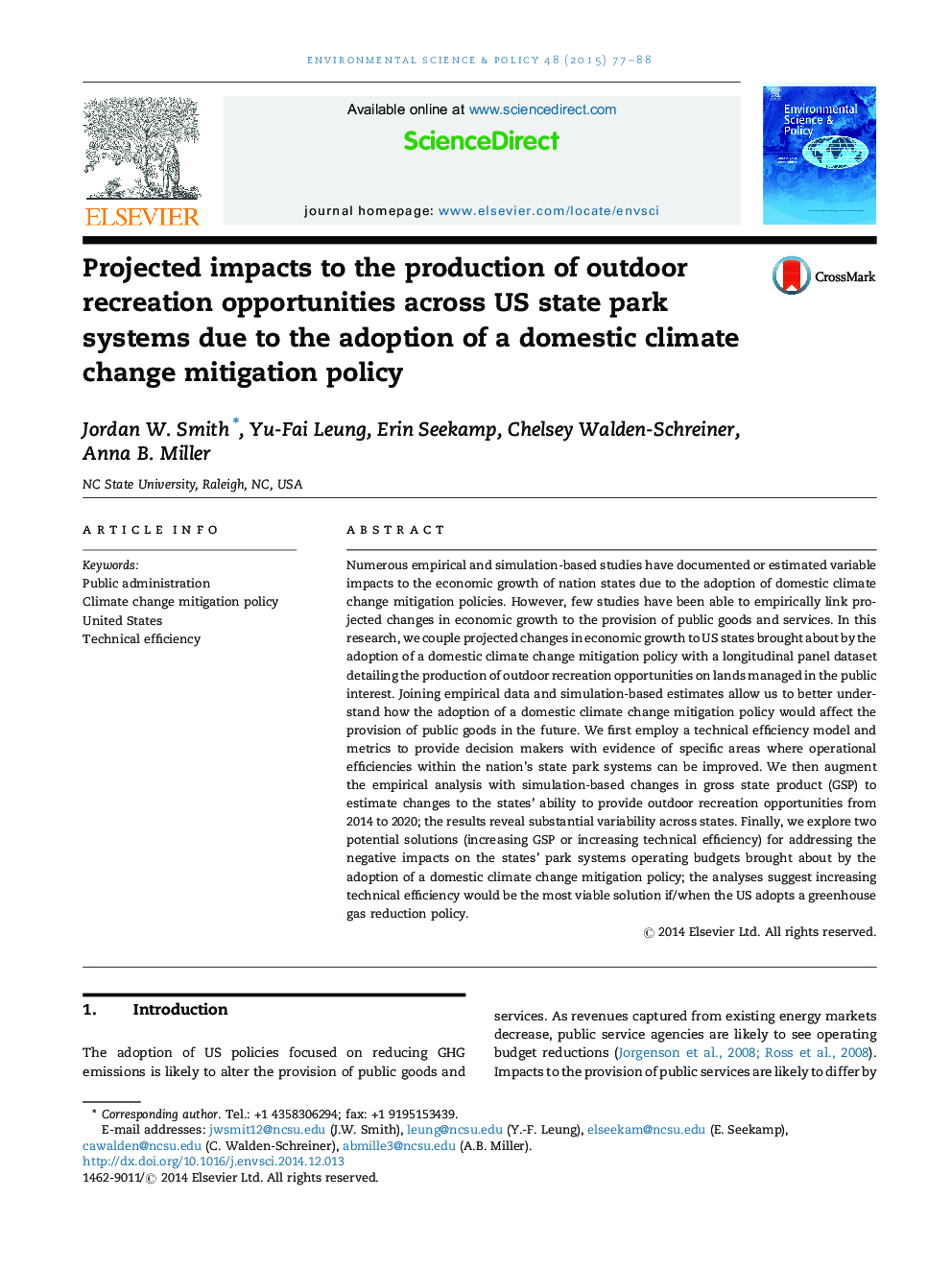| Article ID | Journal | Published Year | Pages | File Type |
|---|---|---|---|---|
| 7467489 | Environmental Science & Policy | 2015 | 12 Pages |
Abstract
Numerous empirical and simulation-based studies have documented or estimated variable impacts to the economic growth of nation states due to the adoption of domestic climate change mitigation policies. However, few studies have been able to empirically link projected changes in economic growth to the provision of public goods and services. In this research, we couple projected changes in economic growth to US states brought about by the adoption of a domestic climate change mitigation policy with a longitudinal panel dataset detailing the production of outdoor recreation opportunities on lands managed in the public interest. Joining empirical data and simulation-based estimates allow us to better understand how the adoption of a domestic climate change mitigation policy would affect the provision of public goods in the future. We first employ a technical efficiency model and metrics to provide decision makers with evidence of specific areas where operational efficiencies within the nation's state park systems can be improved. We then augment the empirical analysis with simulation-based changes in gross state product (GSP) to estimate changes to the states' ability to provide outdoor recreation opportunities from 2014 to 2020; the results reveal substantial variability across states. Finally, we explore two potential solutions (increasing GSP or increasing technical efficiency) for addressing the negative impacts on the states' park systems operating budgets brought about by the adoption of a domestic climate change mitigation policy; the analyses suggest increasing technical efficiency would be the most viable solution if/when the US adopts a greenhouse gas reduction policy.
Related Topics
Physical Sciences and Engineering
Energy
Renewable Energy, Sustainability and the Environment
Authors
Jordan W. Smith, Yu-Fai Leung, Erin Seekamp, Chelsey Walden-Schreiner, Anna B. Miller,
